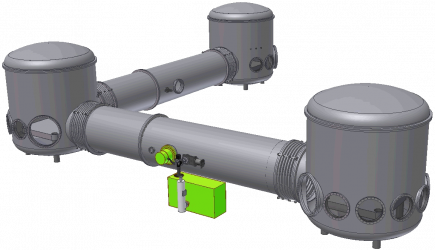At the prototype we use a lithum niobate New Focus (now Newport) 4004 broadband electro-optic modulator (EOM) as part of our reference cavity frequency stabilisation servo. During measurements we noticed that the EOM contained high-Q resonances at around 790 kHz and 2 MHz which looked mechanical in origin:
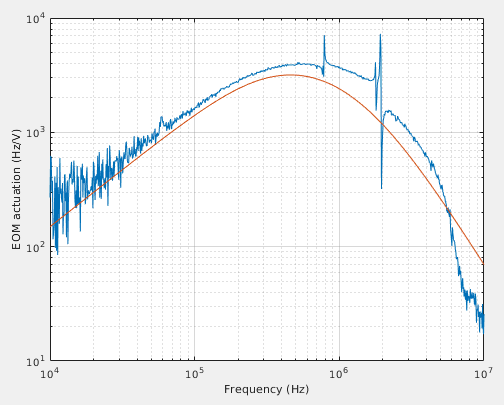
These resonances appear on the light as unwanted frequency modulation. The presence of the 790 kHz resonance creates instability in our servo, preventing us from pushing its unity gain frequency higher. A higher unity gain frequency would allow for greater suppression of laser frequency noise in the 100 Hz to 1 kHz band of the reference cavity, which in turn would reduce coupling of frequency noise to the main SQL interferometer where it would otherwise show up as a significant noise source masking the quantum noise that we wish to measure.
In passing, Sean mentioned this to our colleague Rana Adhikari in Caltech, who recalled some old “crystal lore” that mounting the lithium niobate on acoustically impedance matched material can reduce acoustic resonances. This gave Sean and Harald the idea to test this hypothesis by applying damping material to the crystal in a spare New Focus 4004.
We figured the damping material should be somewhat hard, given that the crystal and housing were both hard too, but conformable enough to create good contact on both surfaces. The first material we tried was an ordinary pencil eraser. Whilst “squishy”, the eraser gets harder when compressed. We cut one in half and jammed the two sides inside the housing before re-attaching the lid to compress it down on the crystal:
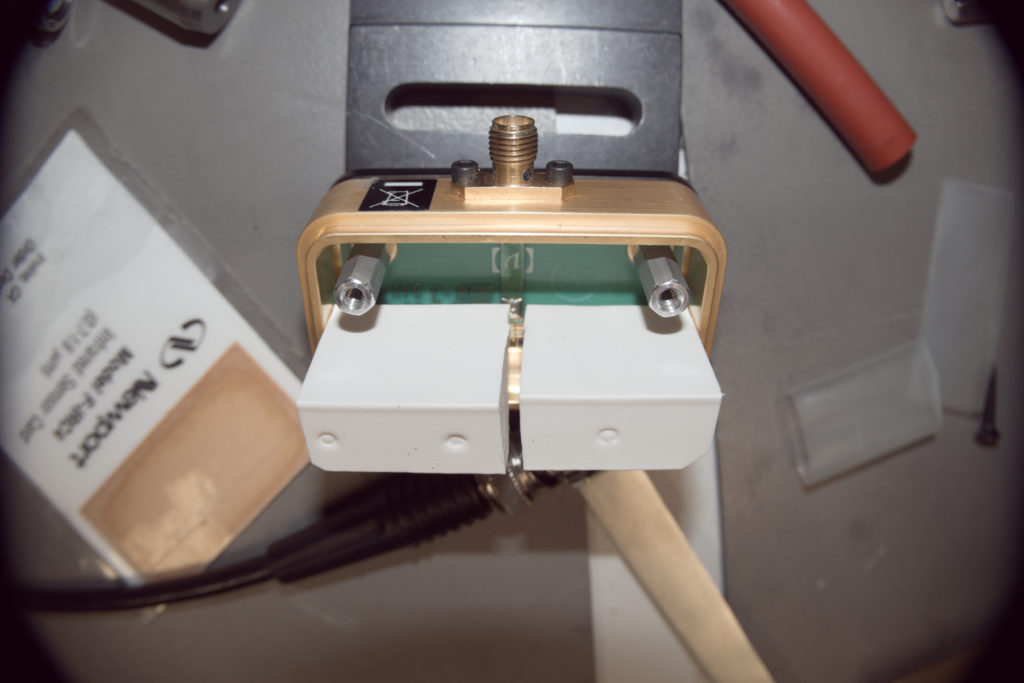
We figured measuring the electrical impedance of the crystal with an RF network analyser was a decent proxy for the optical effect we were seeing in the reference cavity, with the benefit that such a measurement wouldn’t require us to install and align the crystal in the lab. The effect of the eraser on the electrical impedance was considerable:
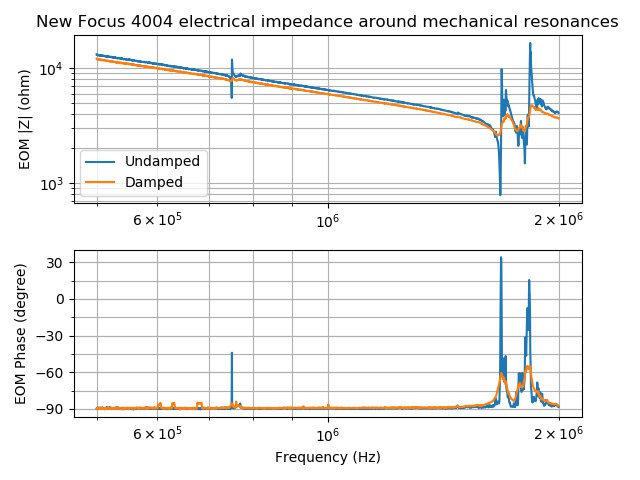
The damping performance was pretty good, but not perfect. But more importantly, the presence of an eraser close to a high power light beam didn’t seem like a good permanent solution. What if it melts or flakes off as it ages? So, next we tried some epoxy. We figured that some (blue!) slow-setting vacuum epoxy would create a good contact between the crystal and housing and provide a way for acoustic energy to propagate away from the crystal. Using two strips of our old eraser as “plugs”, we created a channel into which could be filled epoxy, then poured in the glue and left it to set. We took measurements during setting, and once set we removing the plugs and measured again.

The two eraser “plugs” installed. The crystal is the long gold strip above the green PCB, below the plugs. 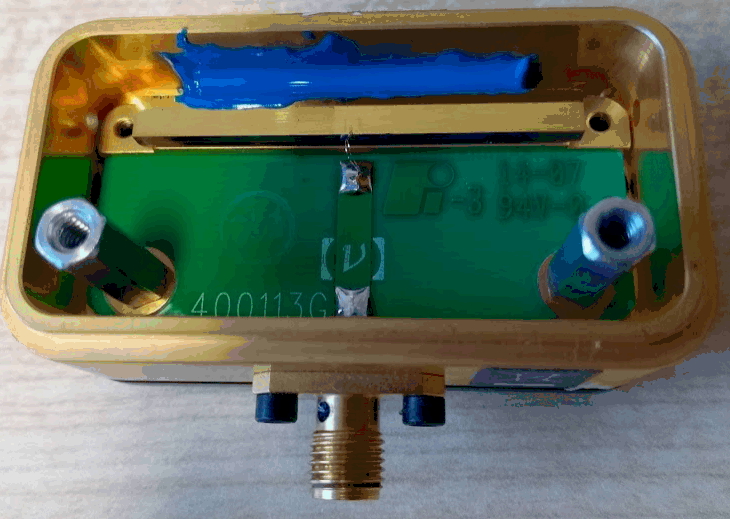
The set glue in the channel formed by the plugs, with the plugs removed.
The results with set epoxy were remarkable. The resonance at 790 kHz (the most critical one to get rid of) was completely gone, while the resonances around 2 MHz were damped to the same degree as with the eraser:
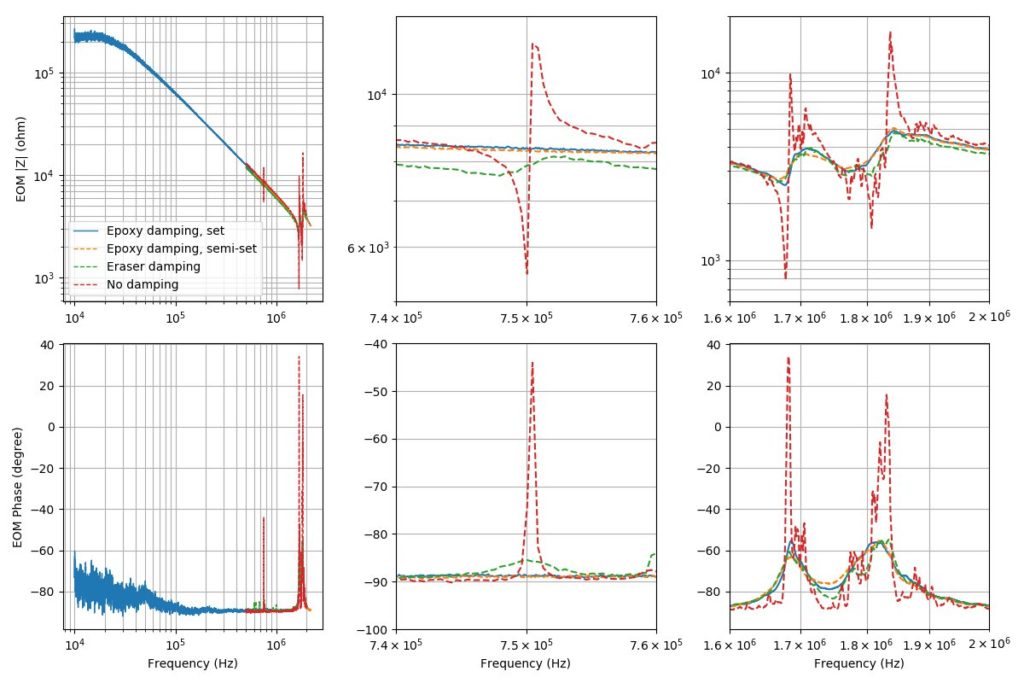
With this nice result, we wanted to transfer the technique to our installed EOM. We didn’t fancy modifying the existing EOM in-situ given its location in a hard-to-reach area, and with the amount of work required to replace it we wanted to make sure it works first time and reliably – no hacks like above – so we decided to ask the professionals. Newport unfortunately have since stopped production of the 4004, but we managed to find another industry partner to discuss our idea with. Funnily enough, the company said that a few of their own EOM projects were being limited by acoustic resonances so our idea came to them at the right time. They quickly set to work building a damped EOM for us, and recently sent it for testing. We’re now in the process of assessing the unit, and hope to install it in the experiment soon, letting us finally improve our frequency noise suppression. Watch this space…
